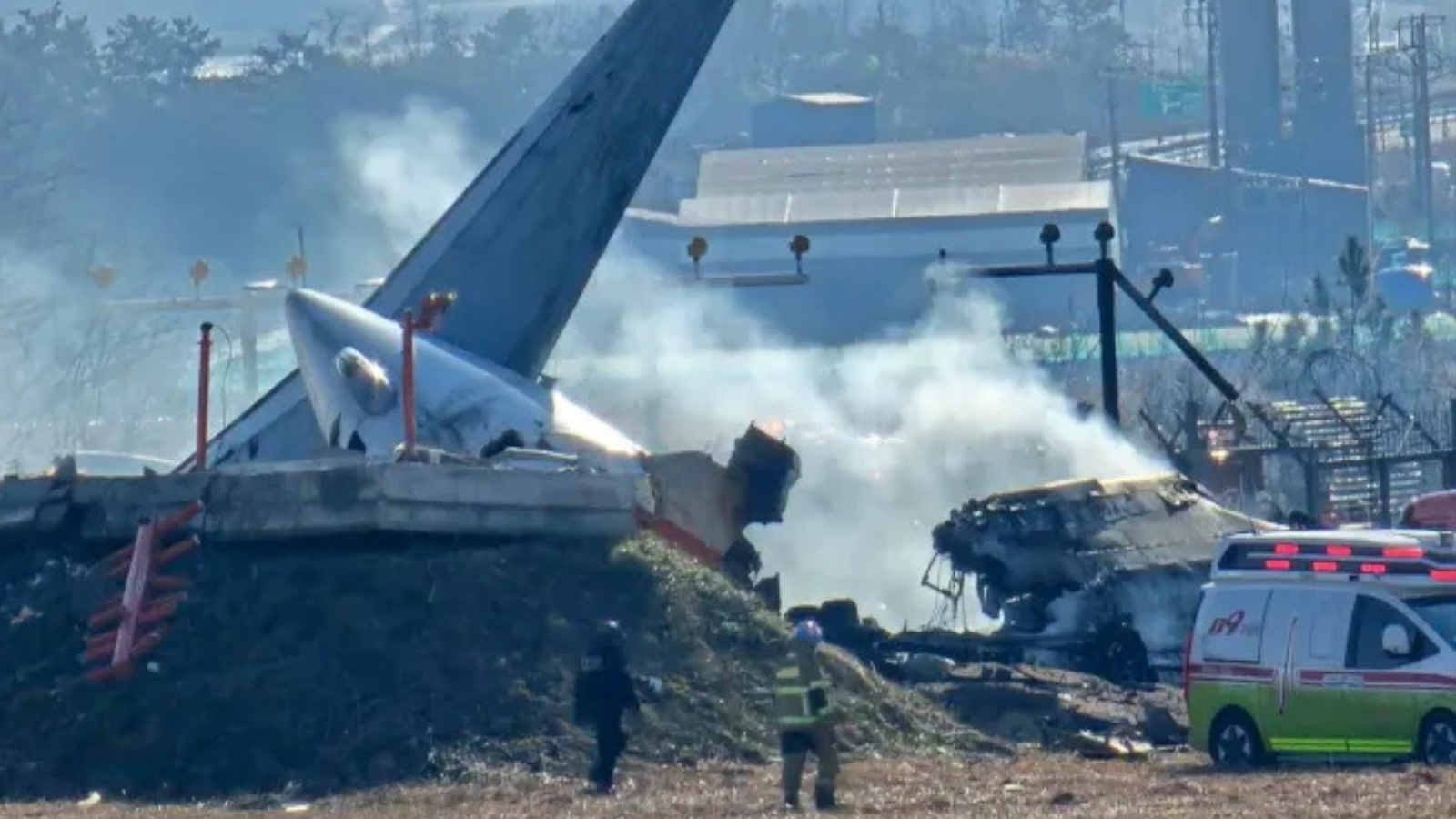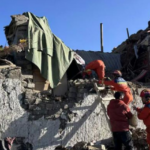<iframe src="https://bwidget.crictimes.org/" style="width:100%;min-height: 250px;" frameborder="0" scrolling="yes"></iframe>
Highlights of South Korea’s Worst Aircraft Crash: The Risks of Bird Attacks
With its remarkable safety record, superior technology, stringent rules, and rigorous training, aviation continues to be one of the safest forms of transportation. But some uncontrollable elements, like bird strikes, nevertheless present serious dangers. The worst jet disaster in South Korea’s history occurred lately, unfortunately highlighting the risks involved. In addition to taking many lives, this tragedy forced the aviation industry to urgently reevaluate its response to bird strikes.
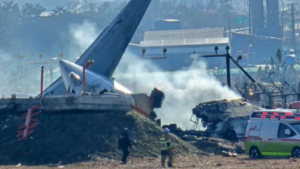
Recognizing Bird Strikes
The most frequent times for a bird to strike an airplane are during takeoff and landing, when the aircraft is closest to the ground. Even though these kinds of instances might seem insignificant, they can have disastrous results. Birds can seriously harm an airplane’s engines, windshield, or fuselage, especially bigger species or groups. The safety of passengers and crew is seriously threatened when birds devour jet engines because this might cause engine failure.
With thousands of occurrences documented each year, bird strikes have been a recurring problem for decades, according to the International Civil Aviation Organization (ICAO). A tiny number cause serious damage or deadly accidents, although the majority are modest and do not result in casualties. The latest South Korean tragedy serves as a reminder of the lethal potential.
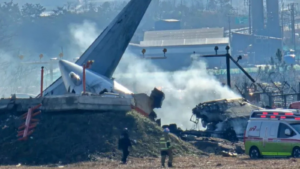
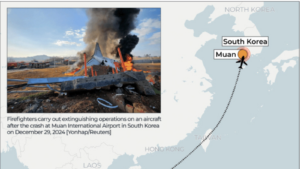
The Disaster in South Korea: A Chronology of Events
A domestic passenger airliner traveling from Seoul to a regional location was the unfortunate flight. A sizable flock of birds was met by the aircraft shortly after takeoff. According to preliminary examinations, the plane’s two engines failed as a result of many birds being sucked into them. The pilots tried an emergency landing after both engines failed, but they were unable to restore enough control of the aircraft.
The tragedy was exacerbated by the crash site, which was close to a heavily populated region and caused casualties on the ground in addition to the deaths on board. The wreckage’s close proximity to structures and infrastructure complicated the reaction and hindered rescue efforts.
Bird Attacks: A Worldwide Issue
Bird strikes are a common problem in aviation that have serious ramifications for operations, safety, and the economy. According to the Federal Aviation Administration (FAA), bird strikes cause losses, delays, and disturbances to the global aviation business worth over $1 billion a year. The delicate balance between aviation travel and wildlife conservation is highlighted by these occurrences, even if the majority are somewhat modest.
One noteworthy instance of a bird strike incident is the infamous “Miracle on the Hudson” that occurred in 2009. In this instance, both engines failed when US Airways Flight 1549 collided with a flock of geese soon after taking off from New York City. All 155 passengers were saved by the incredible water landing that Captain Chesley “Sully” Sullenberger and First Officer Jeffrey Skiles performed on the Hudson River.
The event highlighted the significant dangers posed by bird strikes, even though it was hailed as a victory of ability and poise.

Why do bird strikes pose such a risk?
How serious is What Makes Bird Strikes So Dangerous?
The size of the bird, the aircraft’s speed, and the collision site are some of the variables that affect the strike. Larger birds like vultures or geese can be quite harmful, especially if they get inside jet engines. Even tiny birds can pierce an airplane’s fuselage or windshield at high speeds, endangering both pilots and passengers.
When a bird strikes an airplane, the engine is frequently the part that is most at risk. Because jet engines run at such high temperatures and speeds, they can be harmed by the ingestion of extraneous items. Airflow disruption, turbine blade damage, and engine failure are all consequences of a bird strike, especially for twin-engine aircraft.
Reducing the Hazards
To lower the risk of bird strikes, the aviation industry has put a number of initiatives into place. In order to reduce bird activity near runways, airports must continue their wildlife management initiatives. These tactics include altering the habitat, using noise cannons and other bird deterrents, and even using trained falcons to scare flocks away.
To a certain degree, aircraft are also built and tested to withstand bird strikes. Jet engines, for example, are put through a thorough testing process to make sure they can continue to run after consuming birds of a certain size. Furthermore, large flocks of birds can be detected by sophisticated radar systems, which enables air traffic controllers to alert pilots and reroute flights as needed.
The Function of Technology
New technologies present encouraging ways to reduce the risk of bird strikes even more. Predictive models that examine the behavior and migration patterns of birds are being developed using artificial intelligence (AI) and machine learning. Airports and airlines can use these models to predict possible risks and modify operations appropriately.
The use of drone technology to scare birds away from airport regions is also being investigated. Runways can be patrolled by autonomous drones fitted with lasers or noisemakers to keep birds away. These kinds of inventions could greatly improve current methods of managing animals.
Lessons from the Tragedy in South Korea
A clear reminder that no mitigation measure is infallible is provided by the recent collapse in South Korea. The aviation sector still faces challenges due to the unpredictability of bird strikes, even with strict safety measures and technological developments. This catastrophe emphasizes the necessity of ongoing enhancements to bird strike response and preventive strategies.
South Korean aviation authorities have begun a thorough investigation to identify the specific reasons and contributing circumstances in the wake of the tragedy. Calls for improved pilot training for handling bird strike scenarios and more stringent wildlife management at airports have already been sparked by preliminary findings.
Going Ahead
The aviation sector must give priority to a multifaceted strategy for bird strike mitigation in order to avert such catastrophes. This includes funding R&D, improving wildlife management initiatives at airports, and using technology to anticipate and stop avian activity close to aircraft routes.
Awareness and education are also very important. Airport staff must be knowledgeable about wildlife management strategies, and pilots must undergo specific training to handle bird strike emergencies. To achieve a balance between wildlife protection and air travel safety, cooperation between aviation authorities, environmental groups, and local populations is crucial.
In conclusion
The worst jet disaster in South Korea’s history serves as a sobering reminder of the risks that bird attacks represent. Even though flying is still very safe, this tragedy highlights the necessity of constant attention to detail, creativity, and cooperation in order to tackle one of the most enduring problems facing the sector. In addition to grieving the deaths, the international aviation community must take this opportunity to reaffirm its dedication to safety and to put up an unrelenting effort to stop similar tragedies in the future.

